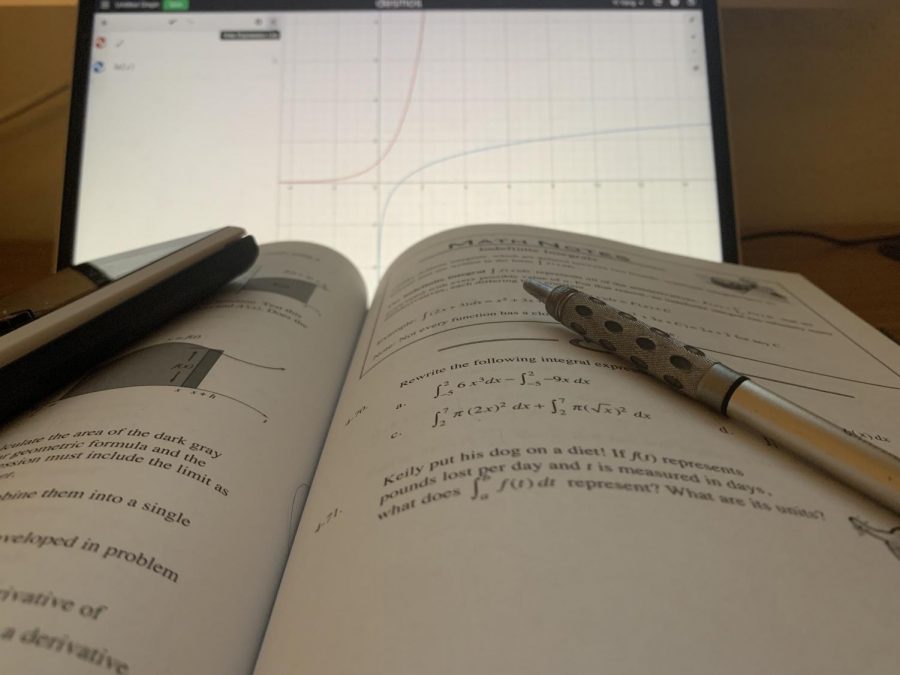Math today: competition math, its importance, and math curriculum improvements
During the COVID-19 and online school, math teachers have tried to make learning math more interactive with online tools such as Desmos and videos.
September 23, 2020
As the 2020 International Mathematics Olympiad (IMO) – held online this year – comes to a close, students and teachers alike want to increase interest in math and math competitions by making math more fun and interesting.
Since 1959, the International Mathematics Olympiad is an annual international where the best math students from around the world gather to compete in an elite competition, with the most decorated often going on to become top research mathematicians.
Competition math focuses more on critical thinking and problem solving rather than more traditional methods. In other words, up to a certain point, participants do not need to know advanced mathematics like calculus.
Instead, it focuses mostly on problem solving with the problems being able to be solved with elementary techniques such as basic algebra and geometry.
“Competition math is about thinking with different mindsets and finding the one that [solves the problem],” said Dennis Chen (‘23) a USAJMO qualifier.
The problems for competition math are very different compared with school math.
“These questions are a little bit richer, in the sense that . . . it’s about taking a set of constraints and thinking about it in whatever way you can to find a solution . . . For kids that enjoy math, competition math is the way to do it. It’s not handing you the answers; it is telling you to explore,” said Math teacher Charles Snyder.
There are many differences between competition math and school math material, but teachers are trying to incorporate deeper questions in class by giving puzzles and harder, deeper thinking questions.
“We strayed away from thinking of math as the part where we are thinking about how to do the problem. We start to think of it as the part where you answer the problem,” said Snyder.
There are also some complaints surrounding the textbooks that math classes use, such as the CPM textbooks.
“[School math textbooks] are just presenting bad pedagogy. Their approach to things is straight up wrong. A good textbook should be able to implicitly present a mental map of what you’re trying to learn. Unfortunately, the textbooks themselves tend not to know what their approach is,” explained Chen.
In addition, classroom dynamics play an important role in learning, especially in Math. A more student-driven approach to learning mathematics can lead to better results for students as they can more effectively identify and reinforce harder concepts.
“But in my opinion, if we keep looking at it like a teacher has to teach a unit, give a test, grade a test, and give that test back, it is going to feel like a failure this year . . . Too much of education has evolved to be teacher driven. I think education will be better if it were more student driven,” said Snyder
In his class, Snyder gives his students opportunities to share interesting and challenging math problems intended for students to think deeper.
He advises students to visit teachers to talk about math and competition math to understand it and appreciate it better.
“I would encourage students to approach their teachers . . . just in general, develop relationships with your teachers, and ask them questions. That’s how you get to know math better,” said Snyder.
To learn more about competition math, visit the Art of Problem Solving website. Students can also ask their teachers for more resources concerning math and competition math.





